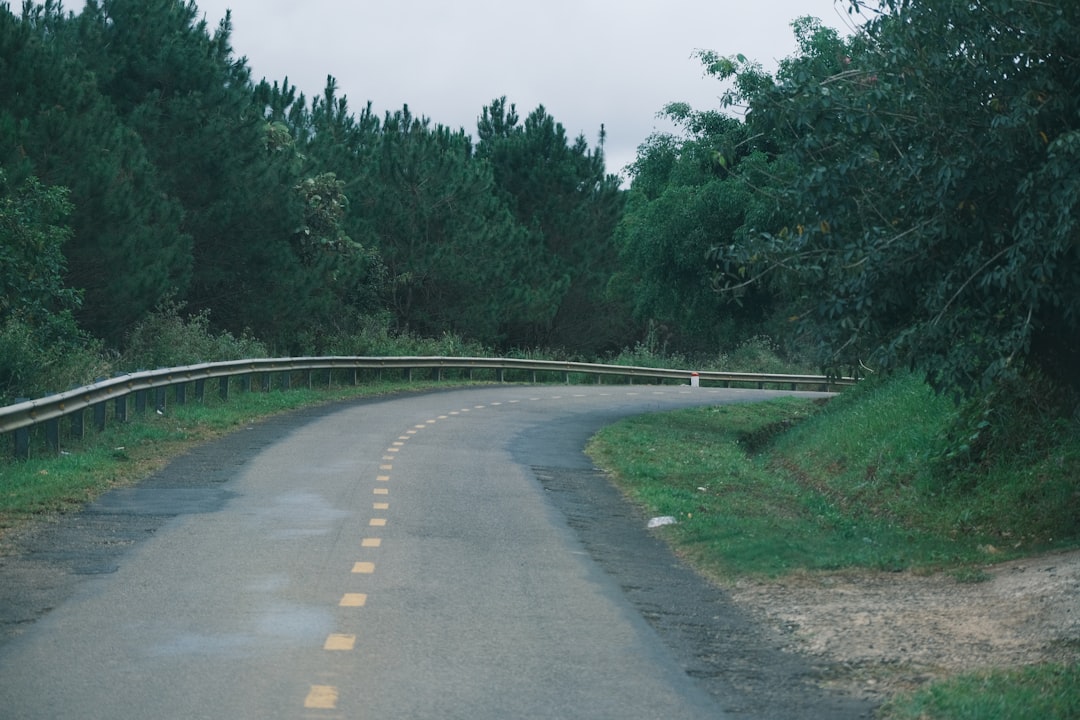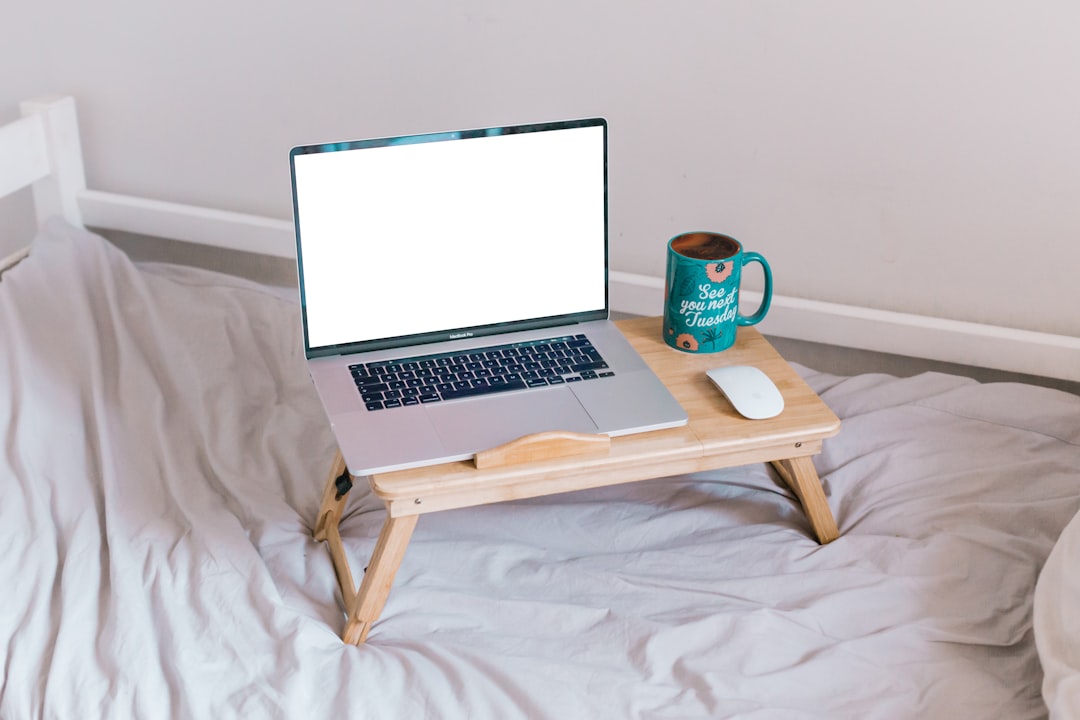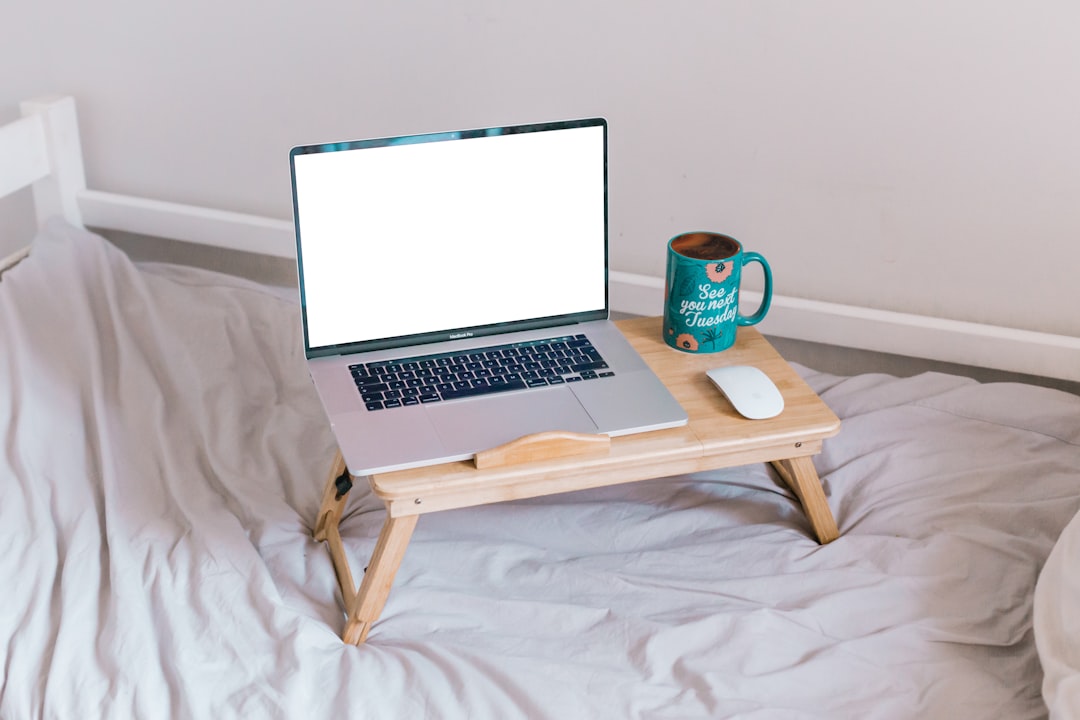Road Ready Workouts To Keep You Strong On The Move

Introduction
Living a location‑independent life offers freedom, adventure, and the chance to explore new cultures every day. The flip side is that the routine that once anchored your health—regular gym visits, a set commute to a workplace, predictable meal times—can dissolve the moment you book a flight or hop on a train. For digital nomads, staying strong and mobile isn’t just a nice‑to‑have; it’s a practical necessity. Muscles that feel sturdy help you carry luggage, bike through unfamiliar streets, and keep your posture upright during long hours in front of a laptop.
This guide is a practical toolbox of “road ready” workouts that can be performed in a hostel lounge, a park bench, a tiny apartment, or even a hotel room. The emphasis is on minimal equipment, time‑efficient routines, and the flexibility to adapt to changing schedules and environments. Whether you are a seasoned athlete or just starting to move your body more intentionally, you will find options that keep you strong on the move.
Why Strength Matters for the Nomadic Lifestyle
- Back and neck health – Constant typing, phone use, and occasional backpack loads strain the spine. A solid core and upper‑back musculature act as a natural brace.
- Endurance for travel – Walking long distances, climbing stairs, or cycling through a city demands cardiovascular fitness and leg strength.
- Injury prevention – Strong muscles stabilize joints, reducing the risk of sprains, strains, and overuse injuries that could derail a trip.
- Mental resilience – Physical activity triggers endorphins, which help combat the loneliness or stress that can surface when you’re far from familiar support networks.
- Productivity boost – A quick workout can reset focus, improve blood flow to the brain, and increase overall work output during the day.
Common Challenges on the Road
- Limited space – Small hotel rooms or shared dorms rarely have dedicated workout areas.
- Unpredictable schedule – Meetings across time zones, spontaneous travel changes, and jet lag can make fixed workout times impossible.
- Lack of equipment – Most nomads don’t travel with a full gym bag; heavy dumbbells or machines are out of the question.
- Variable climate – Outdoor runs may be impossible during monsoon season, extreme heat, or cold snaps.
- Motivation dips – New surroundings are exciting, but the novelty can also distract from regular exercise habits.
Understanding these obstacles is the first step toward designing a system that works despite them.
Core Principles for Road Ready Fitness
Keep It Simple
Complex programs with dozens of exercises quickly become unsustainable when you are moving from city to city. Focus on compound movements that engage multiple muscle groups at once.
Prioritize Mobility
Flexibility and joint health are as important as strength. A mobile body moves efficiently, reduces soreness, and adapts better to different terrains.
Use What You Have
Your own body weight, a sturdy chair, a park bench, resistance bands, a backpack filled with books—these are all tools that can become part of a workout.
Stay Consistent, Not Perfect
A 10‑minute session is better than missing a whole day. Aim for frequency, even if the duration varies.
Listen to Your Body
Travel can bring new physical stresses. If a joint feels tight or a muscle aches, modify the movement or incorporate more recovery work.
Equipment‑Light Workouts
Below are three categories of workouts that require little to no gear. Each routine can be scaled up or down based on your fitness level, time constraints, and the space you have available.
Bodyweight Circuit
Perform each exercise for 30–45 seconds, then rest 15 seconds before moving to the next. Complete the circuit 3–5 times.
- Squat to Chair – Stand in front of a chair, lower into a squat until your glutes touch the seat, then stand back up. Keeps form in check and protects knees.
- Push‑Up Variations – Standard, knee, or incline (hands on a bench) push‑ups work the chest, shoulders, and triceps.
- Plank Walk‑Outs – From a standing position, walk your hands forward into a high plank, hold for a second, then walk back. Engages core and shoulders.
- Reverse Lunge with Backpack – Hold a loaded backpack on your shoulders, step back into a lunge, and return. Adds resistance to the lower body.
- Superman Pull – Lie face down, lift chest and legs, then pull elbows toward your ribs. Strengthens the lower back and posterior chain.
Adjust the interval length based on your fitness. Beginners may start with 20 seconds work, 30 seconds rest. Advanced athletes can increase work time to a minute and reduce rest.
Resistance Band Strength Session
Resistance bands are lightweight, travel‑friendly, and provide variable tension. A single set (light, medium, heavy) can cover most strength needs.
- Band Pull‑Apart – Hold the band with both hands at shoulder width, stretch it horizontally. Works the rear delts and upper back.
- Band Assisted Pull‑Up – Loop the band over a sturdy horizontal bar (doorway pull‑up bar, park rail) and place a foot or knee in the loop to assist upward motion.
- Band Squat Press – Stand on the band, hold handles at shoulder height, squat, then press overhead as you stand. Full‑body movement.
- Band Hip Abduction – Anchor the band to a leg, stand sideways, and move the outer leg away from the anchor. Strengthens glutes and hips.
- Band Row – Secure the band at waist height, sit on the floor, pull the handles toward your torso. Engages the middle back.
Perform 3 sets of 12–15 reps for each exercise. Rest 60 seconds between sets.
Mobility Flow
A short mobility routine can be done in the morning, after a long flight, or before a meeting to reset posture.
- Cat‑Cow Stretch – On hands and knees, alternate arching and rounding the back. Improves spinal flexibility.
- World’s Greatest Stretch – Lunge forward, place both hands inside the front foot, rotate torso toward the forward leg, reach arm upward. Opens hips, thoracic spine, and shoulders.
- Standing Quad Stretch with Backpack – Grab a strap or the top of a backpack, pull the foot toward the glutes while balancing on the opposite leg. Stretches the front thigh.
- Ankle Circles – Lift one foot off the ground and rotate the ankle clockwise then counter‑clockwise. Enhances ankle mobility for walking and running.
- Thoracic Foam Roll (or Towel Roll) – Lie on a foam roller or rolled towel placed horizontally under the upper back, gently roll from shoulders to mid‑spine. Relieves tension in the upper back.
Spend 30–45 seconds on each movement, breathing deeply throughout.
High‑Intensity Interval Training (HIIT) for the Road
HIIT delivers cardiovascular benefits in a short time window, perfect for nomads juggling work and travel. The key is to pick moves that require no equipment and can be performed in a confined area.
Sample 15‑Minute HIIT
| Interval | Exercise | Duration |
|---|---|---|
| Warm‑up | Jog in place, arm circles | 2 min |
| Sprint | High knees | 30 sec |
| Rest | Light marching | 30 sec |
| Sprint | Burpees | 30 sec |
| Rest | Light marching | 30 sec |
| Sprint | Jump squats | 30 sec |
| Rest | Light marching | 30 sec |
| Sprint | Mountain climbers | 30 sec |
| Rest | Light marching | 30 sec |
| Sprint | Skater hops | 30 sec |
| Cool‑down | Stretch major muscle groups | 2 min |
Feel free to swap any movement that feels uncomfortable for a more joint‑friendly option (e.g., replace jump squats with bodyweight squats). The total workout time stays around 15 minutes, making it feasible even on a packed schedule.
Yoga and Flexibility for the Nomadic Body
Yoga not only improves flexibility but also supports mental calmness—a valuable asset when navigating unfamiliar places. Below is a concise sequence that can be practiced in a small space, no mat required.
- Sun Salutation A (3 rounds) – Flow through mountain pose, forward fold, half lift, plank, low‑crouch, upward facing dog, and downward facing dog.
- Warrior II (both sides) – Strengthens legs, opens hips, and builds stamina.
- Triangle Pose – Stretches the side body and hamstrings.
- Seated Forward Fold – Relaxes the lower back and hamstrings.
- Supine Twist – Releases tension in the spine and aids digestion.
- Savasana (1–2 min) – Finish with deep breathing, allowing the nervous system to reset.
Practicing this routine in the morning or before bedtime can enhance sleep quality, reduce travel‑related stiffness, and create a sense of grounding amidst constant movement.
Recovery Strategies While Traveling
Staying strong isn’t just about training; recovery is the counterpart that enables progress. Here are actionable tips for nomads.
- Prioritize Sleep – Aim for 7–9 hours per night. Use blackout curtains or a sleep mask, and keep electronic devices out of the bedroom to improve sleep hygiene.
- Hydration – Carry a reusable water bottle. Dehydration can masquerade as fatigue or muscle soreness.
- Compression Gear – Light compression socks or sleeves can aid circulation on long flights or bus rides.
- Foam Rolling Alternatives – A tennis ball or a rolled-up towel can serve as a makeshift roller for tight spots.
- Active Recovery – On rest days, opt for light walking, gentle stretching, or a short yoga flow rather than complete inactivity.
- Mindful Breathing – Practice diaphragmatic breathing for a few minutes each day to lower cortisol levels and promote relaxation.
Nutrition Basics for a Mobile Lifestyle
Food fuels performance. When you’re on the move, nutrition can become chaotic, but a few guiding principles keep you on track.
- Protein First – Aim for 0.8–1 gram of protein per kilogram of body weight each day. Portable sources include jerky, canned tuna, protein powder, nuts, and Greek yogurt.
- Complex Carbs – Whole grains, legumes, and starchy vegetables provide sustained energy for long work sessions and workouts.
- Healthy Fats – Avocado, olive oil, nuts, and seeds support hormone health and joint lubrication.
- Meal Prep Light – Cook a batch of quinoa or rice, roast vegetables, and portion protein at the beginning of the week. Store in the fridge or a small cooler for easy meals.
- Smart Snacks – Keep trail mix, fruit, or roasted chickpeas on hand to avoid vending machine temptations.
- Stay Flexible – When local cuisine calls, choose grilled or steamed dishes, incorporate vegetables, and limit deep‑fried foods. Enjoy the cultural experience while keeping macro balance in mind.
Building a Sustainable Routine
Creating a routine that travels with you requires intentional planning.
- Identify Anchor Points – Choose two or three consistent daily moments (e.g., after breakfast, before dinner, or right after work) to slot workouts.
- Set Realistic Frequency – Start with three sessions per week and gradually increase if time allows. Consistency beats intensity for long‑term health.
- Create a Portable “Gym Bag” – Include a pair of resistance bands, a jump rope, a travel‑size yoga mat, a water bottle, and a small towel. This bag fits in a backpack and ensures you have the essentials wherever you go.
- Use Technology Wisely – Set calendar reminders for workouts, use timer apps for interval training, and log progress in a note‑taking app or a fitness journal.
- Track Small Wins – Celebrate completing a workout on a rainy day or mastering a new yoga pose. Positive reinforcement sustains motivation.
Community and Accountability
Even digital nomads can tap into supportive networks.
- Local Fitness Meet‑ups – Websites like Meetup or Facebook groups often list running clubs, boot‑camp sessions, or yoga classes in the city you’re staying.
- Virtual Accountability Partners – Pair up with another nomad on a video call once a week to discuss goals, share workout videos, and keep each other honest.
- Online Challenges – Participate in 30‑day push‑up, squat, or plank challenges hosted by fitness influencers. The shared hashtag creates a sense of community.
- Coworking Spaces – Many offer on‑site gyms, standing desks, or group classes. Use these resources to break up sedentary work periods.
Having a social component adds enjoyment and reduces the isolation that can accompany remote work.
Travel Hacks to Keep Fitness On Track
- Choose Accommodation with Space – When booking, filter for rooms that list “gym,” “fitness area,” or “large living space.” Even a small balcony can serve as a workout zone.
- Leverage Public Areas – Parks, rooftops, and hotel lobbies often have open floor space for bodyweight routines.
- Carry a Jump Rope – It provides a high‑calorie cardio option that fits in a carry‑on bag.
- Use Stairs – Opt for stairs instead of elevators whenever possible. A few extra flights each day add up.
- Plan Active Sightseeing – Swap a bus tour for a walking or cycling exploration of the city.
- Schedule “Movement Breaks” – Set a timer to stand, stretch, or walk for five minutes every hour during work.
These simple adjustments weave activity into daily travel habits without requiring dedicated workout sessions.
Sample Weekly Plan
Below is a flexible template that combines strength, cardio, mobility, and recovery. Adjust the order to suit your schedule and the spaces you have.
| Day | Focus | Session |
|---|---|---|
| Monday | Strength (Upper Body) | Resistance band pull‑apart, band rows, push‑up variations, band shoulder press – 3 sets each |
| Tuesday | Cardio + Mobility | 15‑minute HIIT + 10‑minute mobility flow |
| Wednesday | Strength (Lower Body) | Band squat press, reverse lunges with backpack, band hip abduction, calf raises – 3 sets each |
| Thursday | Active Recovery | Yoga flow (Sun Salutation series) + light walk (30 min) |
| Friday | Full‑Body Circuit | Bodyweight circuit (squat to chair, plank walk‑outs, superman pull, reverse lunge with backpack) – 4 rounds |
| Saturday | Outdoor Adventure | Hiking, bike ride, or city run (45–60 min) |
| Sunday | Rest + Stretch | Gentle stretching, foam rolling (or towel roll), deep breathing session |
Feel free to swap days based on travel plans or work deadlines. The key is to keep the mix of strength, cardio, and mobility throughout the week.
Mental Resilience Through Movement
Physical activity is a powerful tool for managing the mental challenges of nomadic life. The rhythm of a workout creates a sense of routine, while the release of endorphins combats anxiety and loneliness.
- Mindful Movement – Focus on breath and body sensations during each rep or stretch. This practice parallels meditation and can be performed anywhere.
- Goal Setting – Set small, measurable goals (e.g., “complete three push‑up variations this week”) and track progress. Achievement fuels confidence.
- Visualization – Before a workout, picture yourself performing the movement with perfect form. Visualization enhances motor learning and prepares the mind for success.
Incorporating these mental techniques turns each workout into a holistic wellness practice, supporting both body and mind.
Tech Tools to Enhance Road Fitness
- Fitness Apps – Apps like Strong, JEFIT, or Fitbod let you log bodyweight and band workouts without needing a gym.
- Timer/Interval Apps – Seconds, Tabata Timer, or Interval Timer provide customizable HIIT intervals.
- Nutrition Trackers – MyFitnessPal or Cronometer help you monitor macro intake, especially when eating out.
- Virtual Classes – Platforms such as YouTube, Daily Burn, or Alo Moves offer short classes that require minimal space and equipment.
- Wearables – A simple fitness tracker monitors steps, heart rate, and sleep quality, giving you data to adjust your routine.
Choose tools that sync across devices so you can access them whether you’re on a laptop, tablet, or phone.
Adapting to Different Environments
Urban Settings
- Use stairs in office buildings or subway stations.
- Park benches serve as sturdy platforms for tricep dips or step‑ups.
- Rooftop terraces often have open space for yoga or bodyweight circuits.
Rural or Remote Locations
- Nature trails provide excellent cardio opportunities.
- Tree branches can be used for assisted pull‑ups with a band loop.
- Sand or grass adds an element of instability, enhancing core activation during squats and lunges.
Hotel Rooms
- Bed edge can be used for incline push‑ups or elevated planks.
- Suitcase filled with clothes becomes a weighted object for goblet squats or overhead presses.
- Wall slides improve shoulder mobility without any equipment.
The core idea is to view every surface as a potential tool rather than a limitation.
Overcoming Plateaus on the Road
Even with varied workouts, plateaus happen. Here are strategies to keep progressing.
- Progressive Overload with Bands – Switch to a higher resistance band or increase the number of repetitions.
- Tempo Changes – Slow down the eccentric (lowering) phase of a movement to increase time under tension.
- Supersets – Pair two exercises back‑to‑back without rest (e.g., band rows followed immediately by push‑ups).
- Add Instability – Perform single‑leg squats or push‑ups on a cushion to engage stabilizer muscles.
- Deload Week – Reduce volume or intensity for a week to allow recovery, then resume with refreshed energy.
By tweaking variables, you keep the stimulus fresh and avoid stagnation.
Safety Tips for On‑The‑Go Training
- Warm Up – Even a brief 3‑minute dynamic warm up (leg swings, arm circles, torso twists) prepares muscles and joints.
- Check Surface Stability – Ensure the floor or ground is not slippery before performing high‑impact moves.
- Mind Your Surroundings – In public spaces, be aware of other people’s paths to avoid collisions.
- Use Proper Form – Quality beats quantity. If an exercise feels uncomfortable, modify or skip it.
- Stay Hydrated and Cool – Carry water and dress in breathable layers, especially in hot climates.
Safety ensures that fitness remains a positive aspect of your travel experience.
Frequently Asked Questions
Can I get a full‑body workout in under 20 minutes?
Yes. A circuit of bodyweight moves (squat to chair, push‑up, plank walk‑out, reverse lunge, superman pull) performed for 40 seconds each with 15‑second rests can be completed in about 15 minutes, providing strength and cardio stimulus.
Do resistance bands replace dumbbells?
Bands can mimic many dumbbell exercises (presses, rows, curls) and offer variable resistance that matches the strength curve of the movement. While they don’t provide the same maximal load as heavy dumbbells, they are sufficient for maintaining muscle tone and hypertrophy in a nomadic setting.
How often should I stretch?
Incorporate a short mobility flow at the end of each workout and a dedicated stretch session 2‑3 times per week. Daily gentle stretching, especially after long periods of sitting, helps prevent stiffness.
What if I miss a workout due to travel delays?
Accept that occasional missed sessions happen. Focus on maintaining overall consistency rather than perfection. If you miss a day, aim to add a quick 10‑minute session the following day or increase the intensity slightly.
Is it safe to do HIIT on an empty stomach?
For most people, a short fasted HIIT session (under 20 minutes) is fine, especially if you have eaten a balanced meal the night before. Listen to your body; if you feel light‑headed, have a small snack (like a banana) before the workout.
Final Thoughts
Staying strong on the move is a blend of smart planning, adaptable workouts, and a mindset that embraces flexibility. By integrating bodyweight circuits, resistance‑band strength, quick HIIT bursts, and regular mobility work, you can maintain muscular endurance, cardiovascular health, and joint flexibility regardless of where the road takes you. Pair these physical strategies with proper sleep, hydration, nutrition, and community support, and you’ll find that fitness becomes a reliable anchor amid the ever‑changing landscape of digital nomad life.
Remember: the goal isn’t to become a gym‑body in a suitcase, but to cultivate a resilient, functional physique that empowers you to explore, create, and thrive wherever you set foot. Keep moving, stay curious, and let each workout be a celebration of the freedom that the nomadic lifestyle offers.
Random Posts

Best Places to Work Anywhere and the Gear That Powers You
Discover top remote work hotspots from Bali cafés to Colorado cabins and the essential gear that keeps you fast, comfy and connected wherever you set up shop.
2 weeks ago

Practical Tips for Organizing Gear on the Move
Learn fast, stress-free gear organization for nomads: assess your travel style, pick the right packing system, streamline digital files and on-the-road laundry. Stay tidy, light, ready.
1 month ago

Building Your Nomad Toolkit From Scratch
Learn how to craft a lean multipurpose nomad toolkit from scratch, covering shelter, power, clothing, health, docs and digital tools, so you travel lighter, save money and focus on adventure.
1 week ago

The Ultimate Nomad Toolkit Apps Books Podcasts and Blogs
Discover the essential toolkit for digital nomads: top apps for communication, finance and productivity, must-read books, inspiring podcasts and helpful blogs, all organized to boost flexibility and confidence on the road.
3 weeks ago

Top Apps Every Nomad Needs for Seamless Remote Work
Discover the must-have apps that keep nomads connected: Slack for organized team chat and integrations, Microsoft Teams for unified messaging, video and Office collaboration, plus essential tools for reliable remote work.
2 months ago
Latest Posts

Essential Software Every Remote Professional Should Use
Master remote work with essential tools: instant messaging like Slack, high definition video calls such as Zoom, and asynchronous voice apps. Streamline communication, stay connected and boost productivity.
1 day ago

Mastering Remote Work Productivity for Digital Nomads and Freelancers
Learn proven habits, tools, and tactics that help digital nomads and freelancers stay focused, deliver quality work, and maintain a sustainable lifestyle while traveling the world.
1 day ago

Tech‑Friendly European Towns Perfect for Remote Living
Discover Europe’s best small towns where fast internet, affordable living and vibrant tech communities let you work remotely while soaking up historic charm, lakeside views or mountain air.
1 day ago